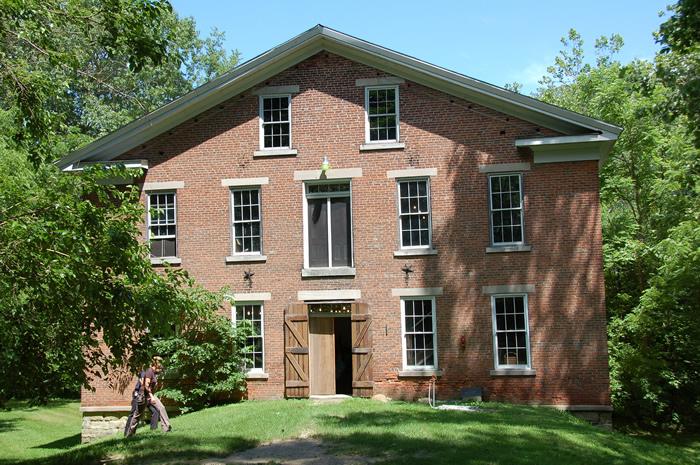
Yount's Woolen Mill & Inn
Montgomery Co. | Indiana | USA
Watersource: Sugar Creek near confluence with Spring Creek.
Yount's Woolen Mill & Inn
West of Crawfordsville on Sh 32 just across Sugar Creek, turn left/south on Old Mill Road to the Younts Mill Inn at 3941 W. Old Mill Rd, Crawfordsville, In 47933
View Larger Map

At one time there were 4 buildings that served to clean, card, spin, weave, and sew the clothes for the community. This 1864 mill is the second one at this spot. This particular mill was under contract to supply uniforms for Civil War Soldiers. At it's peak it employed 300 people, mostly women and some of them paid room & board to live at the Inn.

The Yount family, originally Jundt, brought their knowledge of woolen mills to this country from Germany. Daniel Yount was born Nov. 3, 1807 in Ohio where, at the age of eleven, he began working in his father's woolen mill. In 1828 Daniel's family moved to Indiana and operated woolen mills on the Wea, southeast of Lafayette. In 1835 Dan and his brother, John, started a mill near the Wabash, at what is now the town of Attica. The lack of water power there prevented them from expanding so Dan came to the Yountsville area in search of a mill site. Sugar Creek and it's tributaries provided the power he wanted.
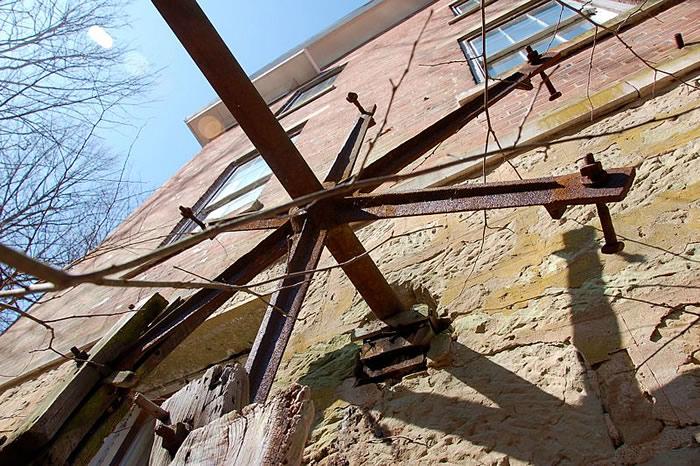
Remnants of the waterwheel extruding from the rear of the mill a few feet away from Sugar Creek. Daniel Yount started the Yount Mills operation near Yountsville in 1840 when he took possession of the Snyder grist mill on the spring fed Spring Creek, about 3/4 of a mile upstream from Sugar Creek. At the time Dan took over the Snyder grist mill there was also a carding mill, located at the mouth of Spring Creek, which was leased by Silas Wright. In 1843 Daniel Yount and his brother, Allen, bought the land bearing the water right at that location from Abijah O'Neall. When Wright's lease expired they started a mill to card and full (pull?) wool nearer the mouth of Spring Creek, using a brush dam.
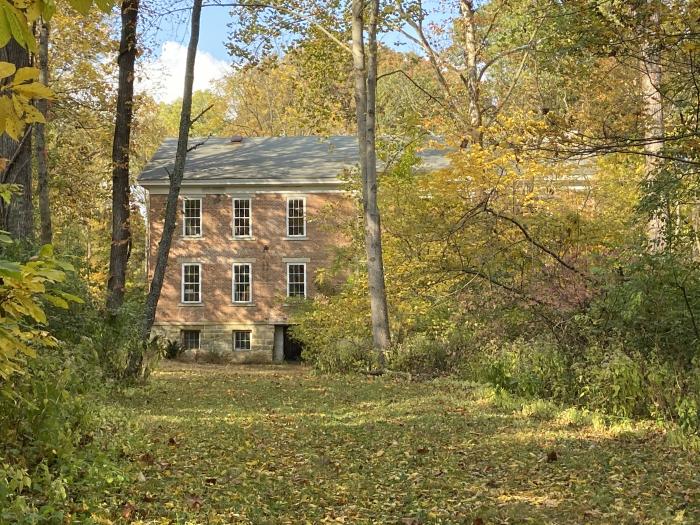
Yount's Woolen Mill pictured from the launch site on Sugar Creek. Photograph is after restoration after new ownership in 2009. The historic site is open to small group tours by reservation only. Private property. Fishing memberships are available for the summer season.
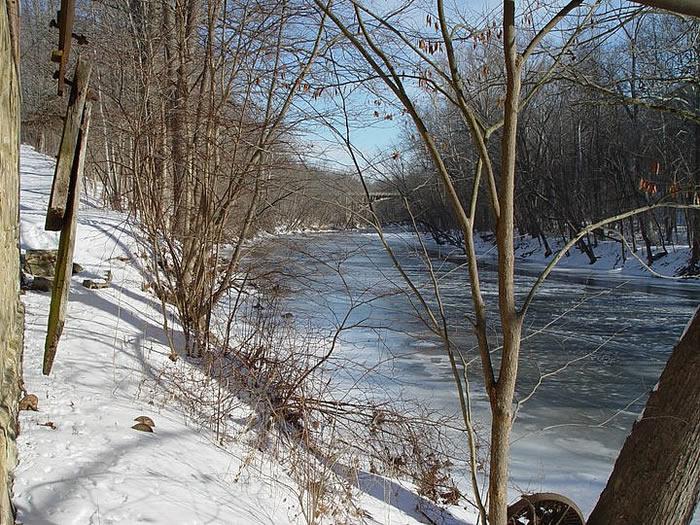
Sugar Creek in winter. In 1849 another larger wooden building was erected about 150 yards southwest of the present brick mill. Only the foundation of this building remains. The race was extended to this building and to its overshot wheel of some 30 feet in diameter. This wheel was the source of power for the looms they installed.
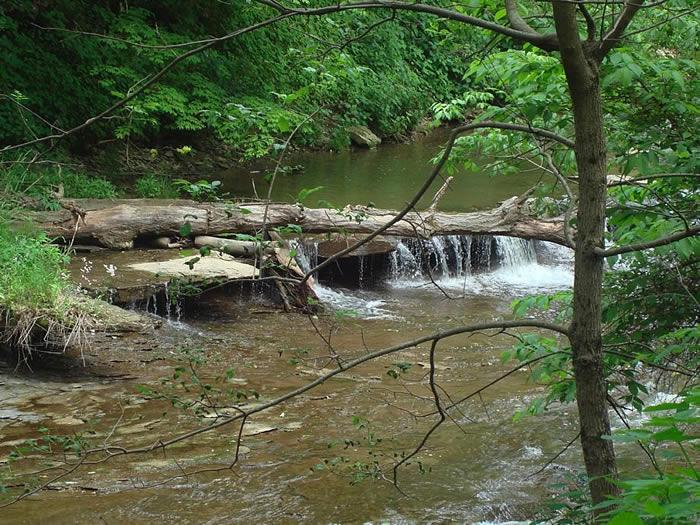
Spring Creek has its confluence with Sugar Creek just a few hundred feet south of the mill. In 1857, Allen Yount sold his interest in the mills to Arthur Russell and Daniel bought this interest a year later to become the sole proprietor.
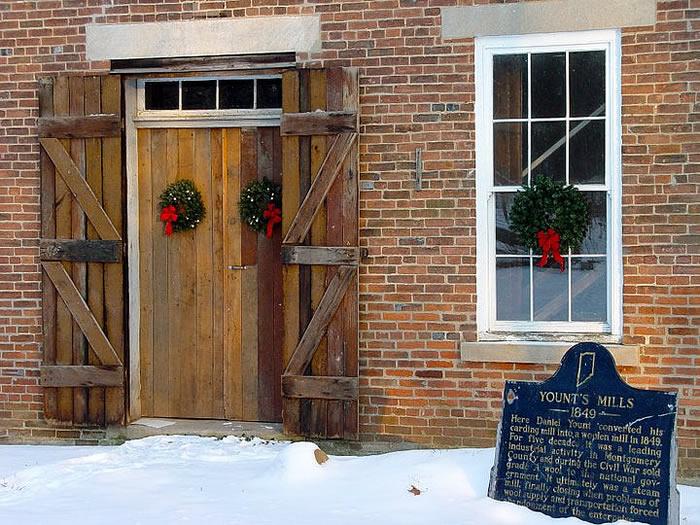
In 1864 Daniel expanded the operation by building the three story brick building in the Greek Revival style on Sugar Creek. This large, 50 ft X 75 ft building is the only surviving mill structure. The mill was powered by a turbine (instead of a water wheel) and the water for it was impounded by a seven foot tall dam across Sugar Creek at the mouth of Spring Creek. (Parts of the turbine remain at the east end, on Sugar Creek. One can only surmise the amount of noise generated by the spinning turbine, wheels, shuttles, and gears that were required to drive the weaving equipment). A three story, 1867 building, 84 ft X 50 ft was added to the south of the Greek Revival mill, connected by wooden bridges and gangways to the older structure, and has since been demolished.
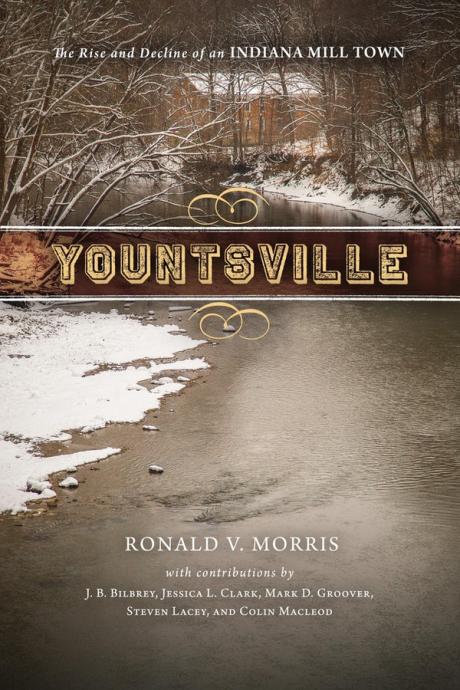
Yountsville: The Rise and Decline of an Indiana Mill Town by Ronald V. Morris https://undpress.nd.edu/9780268106638/yountsville/ In Yountsville: The Rise and Decline of an Indiana Mill Town , Ronald Morris and collaborators examine the history and context of a rural Midwestern town, including family labor, working women, immigrants, and competing visions of the future. Combing perspectives from history, economics, and archeology, this exploration of a pioneering Midwestern company town highlights how interdisciplinary approaches can help recover forgotten communities. The Yount Woolen Mill was founded during the pioneer period by immigrants from Germany who employed workers from the surrounding area and from Great Britain who were seeking to start a life with their families. For three generations the mill prospered until it and its workers were faced with changing global trade and aging technology that could not keep pace with the rest of the world. Deindustrialization compelled some residents to use education to adapt, while others held on to their traditional skills and were forced to relocate.
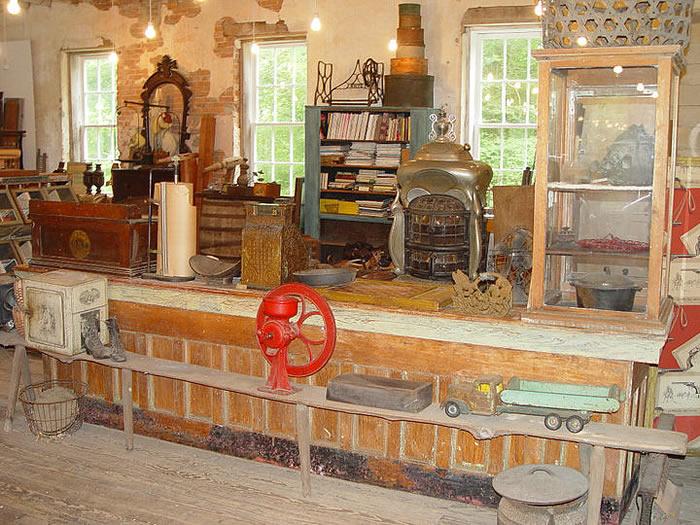
A photo of the interior of the woolen mill. The production of uniforms for the Union Army, during the Civil War, and the Spanish American War brought prosperity to the business and as many as 300 people were employed to process the wool and sew the clothes.Dan Yount died on September 30, 1890 and the Mills were reorganized as Younts Woolen Company. The company was not successful and in 1905 the Mills were closed forever.
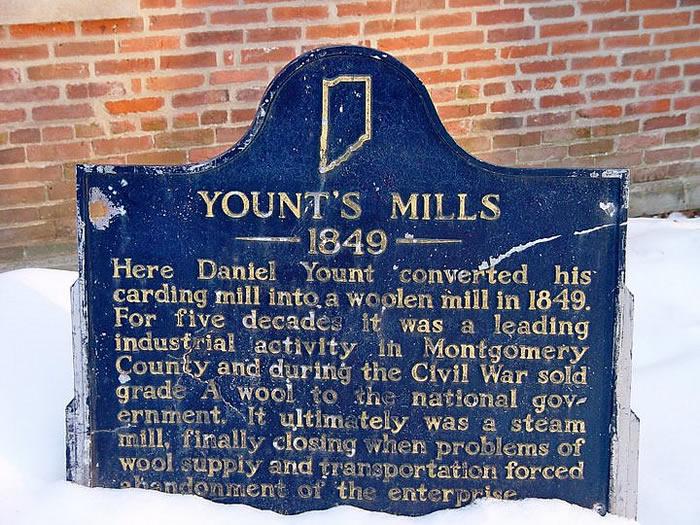
The sign is self-sufficient in its description.
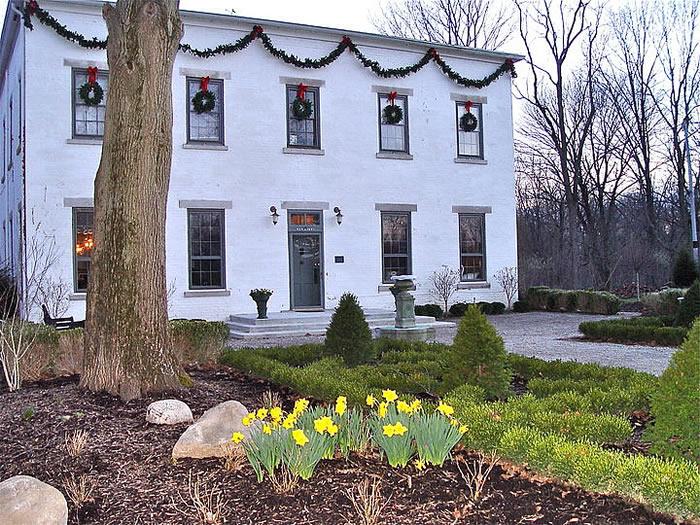
The Federal period architecture is simple in character but keeping to the Quaker belief of Daniel Yount. Visitors comment about how peaceful it is to sit in the house, high above Sugar Creek, constructed of brick with foot thick walls, and twelve foot high ceilings. An occasional bald eagle glides down the creek looking for fish. Four large guest rooms are on the second floor are accessible from the center hall and open to the rear sleeping porch and stairway to the lower porch where guests can visit or take their morning coffee or tea. Each room is decorated with mementoes relating to weaving or needle arts. The entire Inn is generously decorated with antique portraits and original art.

The Inn was originally the boarding house for respectable young working women at Yount's Woolen Mill during the mid 19th century. The Daniel Yount family lived on the creek side while the women lived dormitory style on the west side. A few men lived in a room over the kitchen that was accessible only by a rear stairway at the back of the house. A thirty-eight foot dining room on the lower west side served to feed the boarders. Room and board was $2.50 a week.

For several years, in the first half of the 20th century, the Mill/Boarding House and Inn were neglected and nearly lost. Then in 1987 the Pat & John Hardwick began the major job of cleaning, scraping, roofing, and restoring the Inn for use as a Bed & Breakfast. In more recent years, since 1988, owners have continued the boarding house tradition with the popular Bed & Breakfast lodging. The Yountsville Mill and Inn are very much a part of the country road route to Parke County covered bridge festival, Rockville festivals, State Parks, and antique auctions that are so prevalent around Crawfordsville. Enjoy the music of pianist Alan White and visit the studio of accomplished artist, painter, and glass art designer Barbara Brookie White.
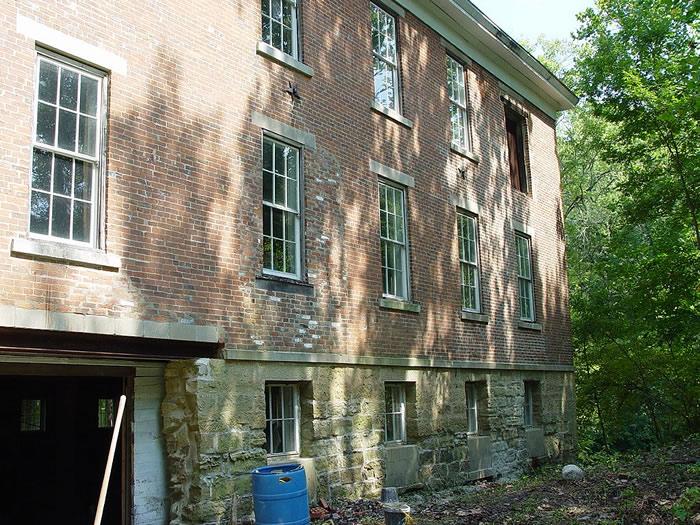
Cathy Clement's great -great grandfather, Henry Clements, came from County Armagh Northern Ireland to work at the Woolen mill in spring of 1866 at the age of 24. The county in Ireland that they were from was known for growing flax and for weaving. The people local to County Armagh were known as talented weavers and knew well how to use spinning wheels & Looms. The family stayed in the area; as her father started the Clements Canoes on Sugar Creek.
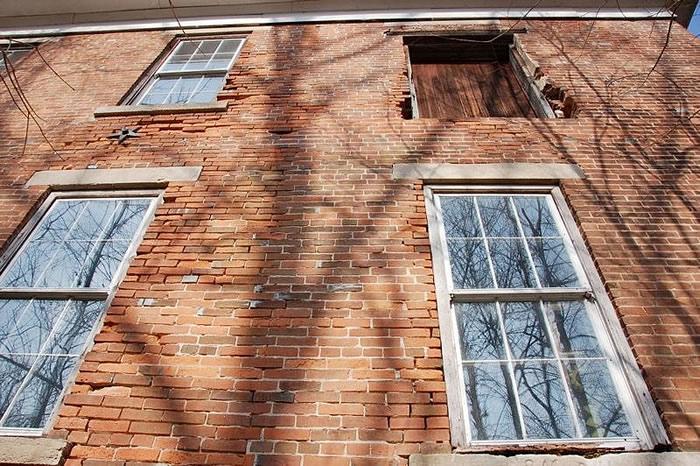
The south side of the brick mill before the repointing had been completed, sometime before the fall of 2009. The Crawfordsville area is noted for crinoid fossils and it is rich in woodland wildflowers. See website for more details.
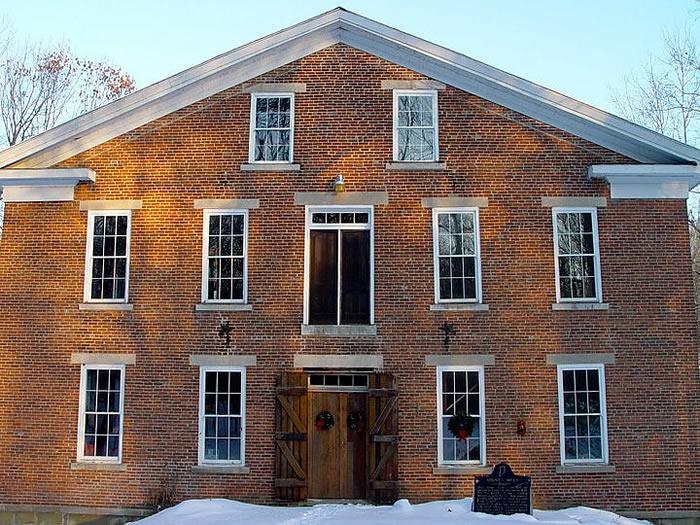
GPS: 40' 1.32'N, 86' 58.44'W Ele. 673'/205 meters Crawfordsville Quadrangle